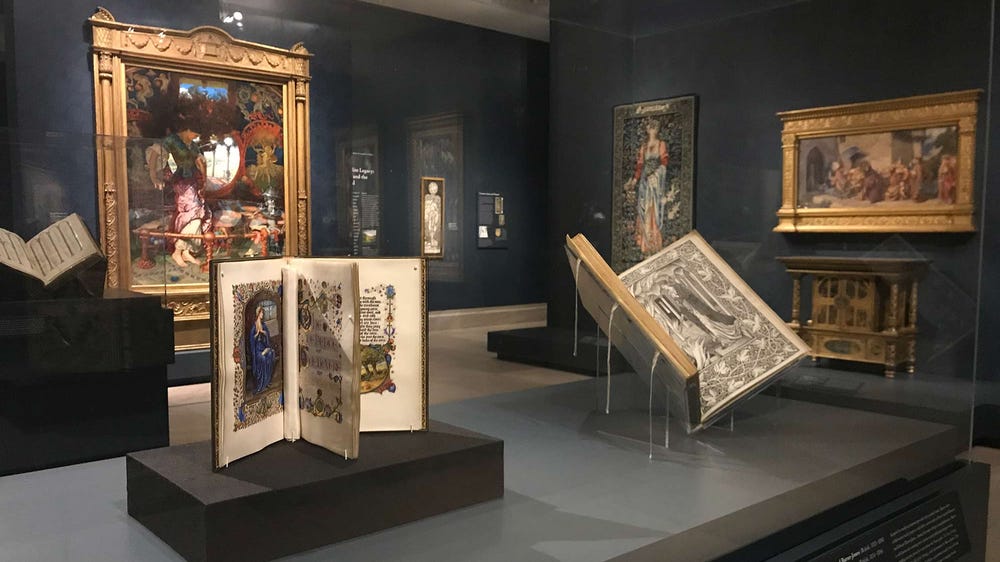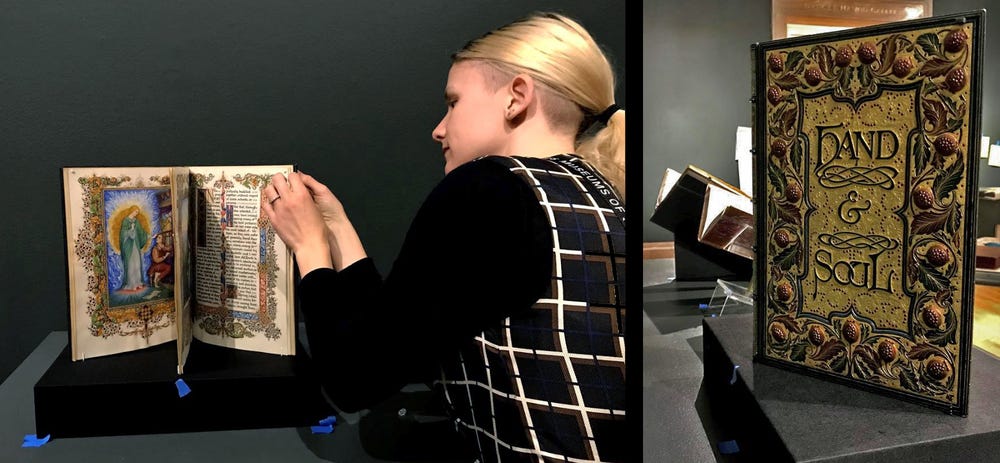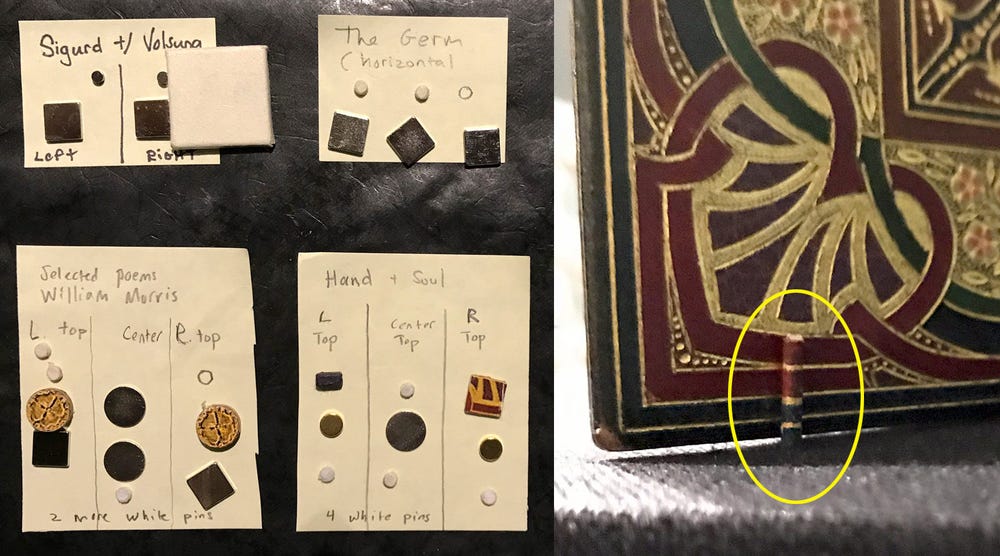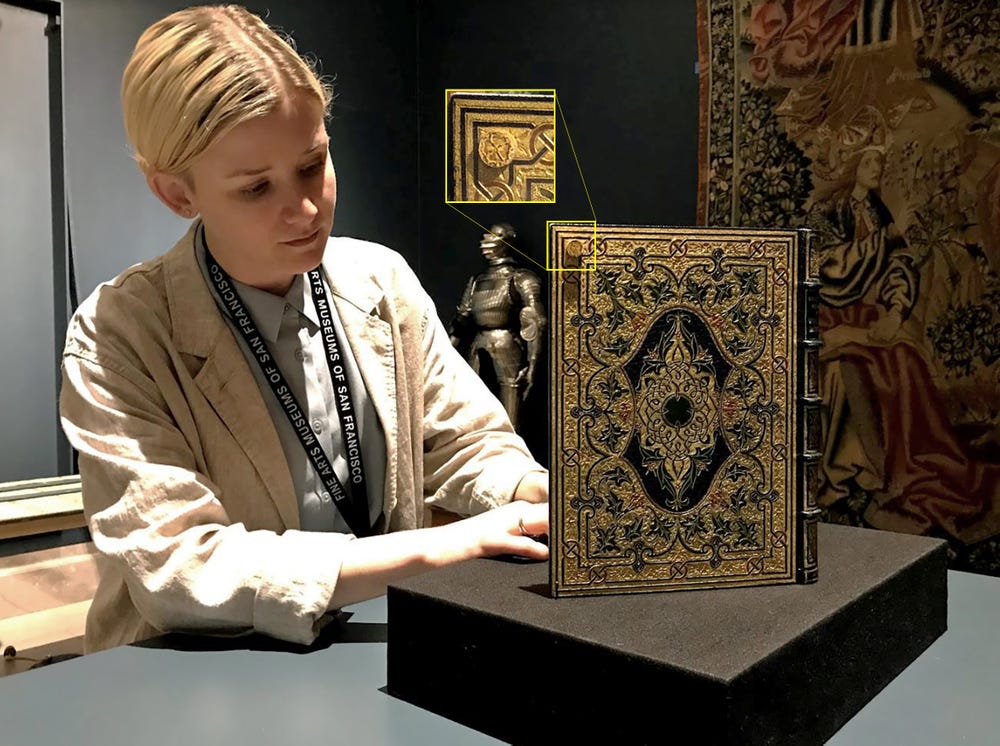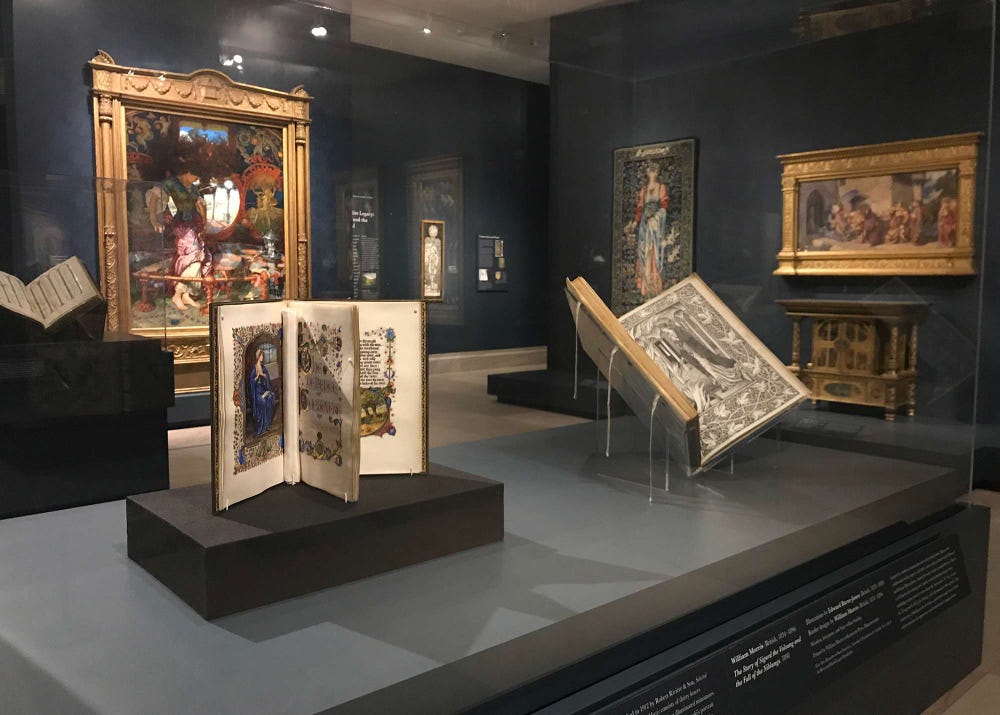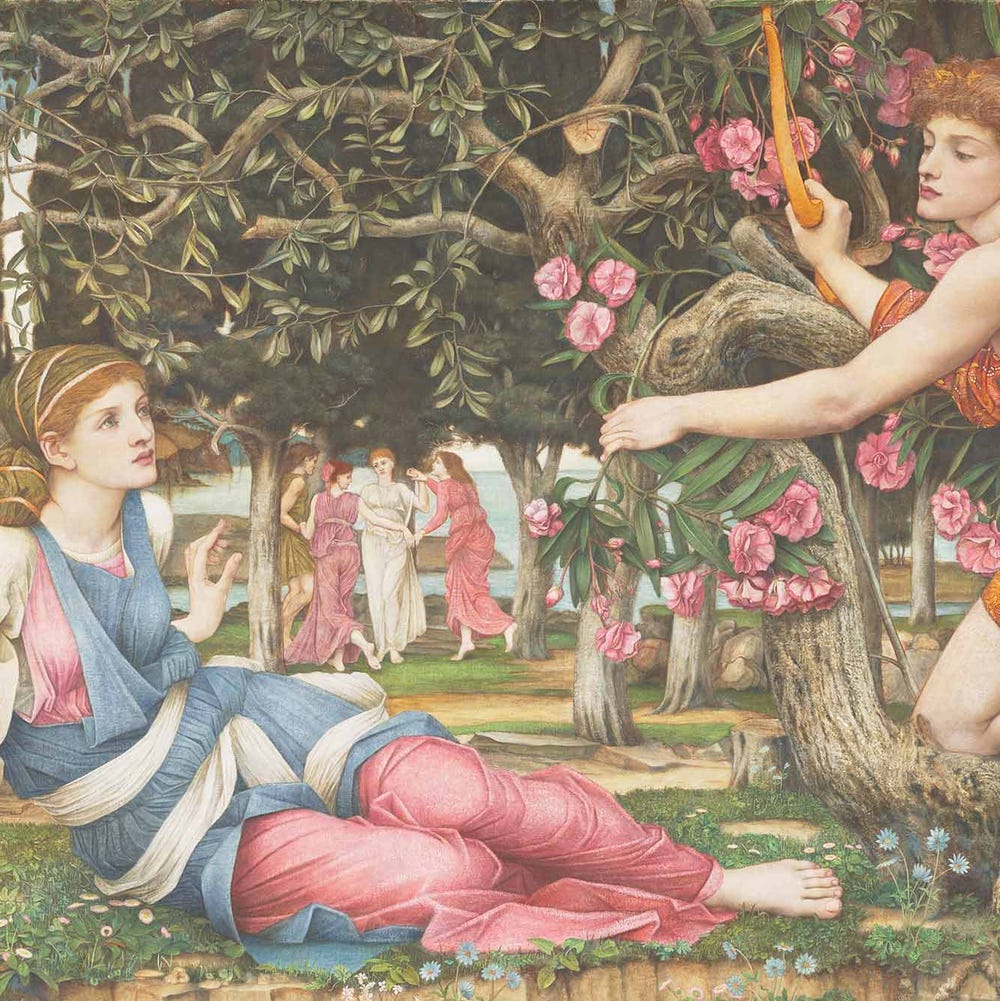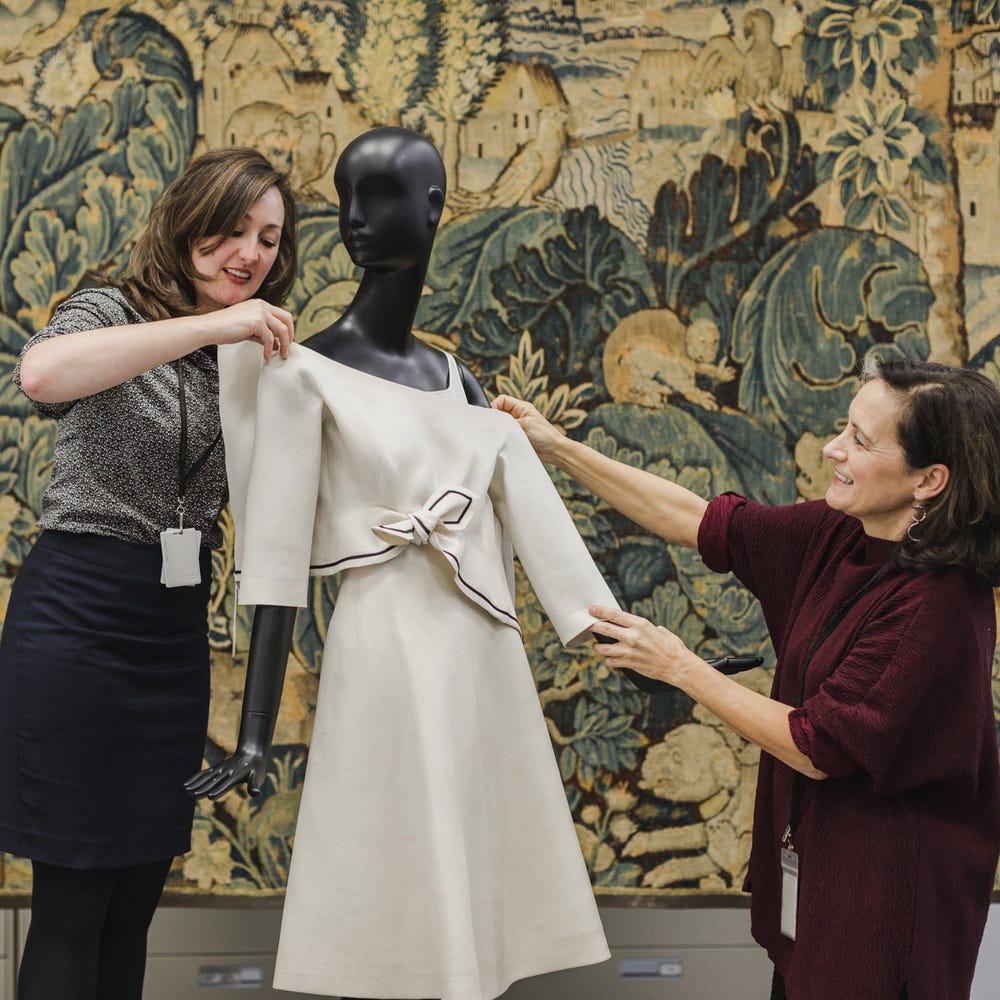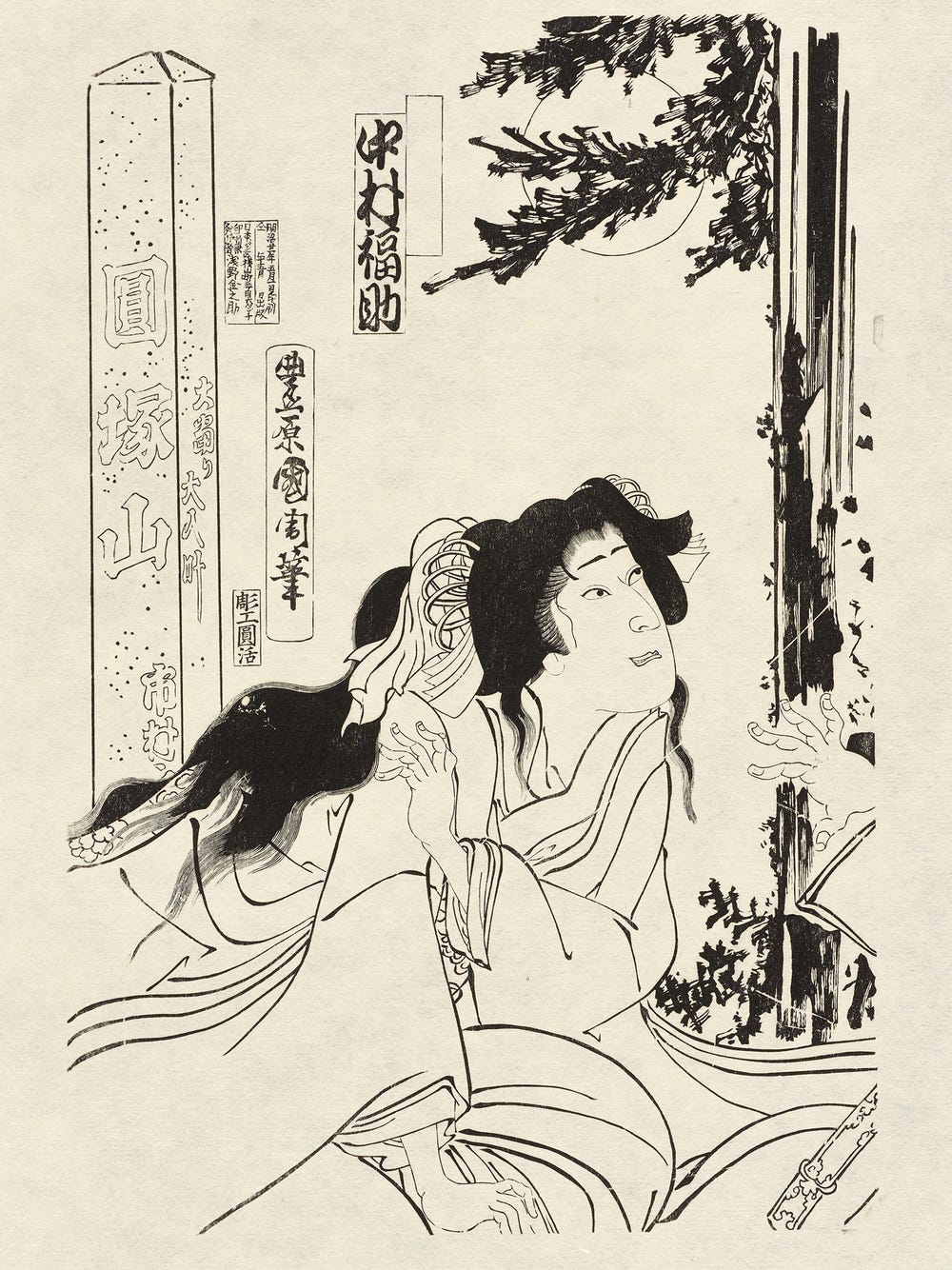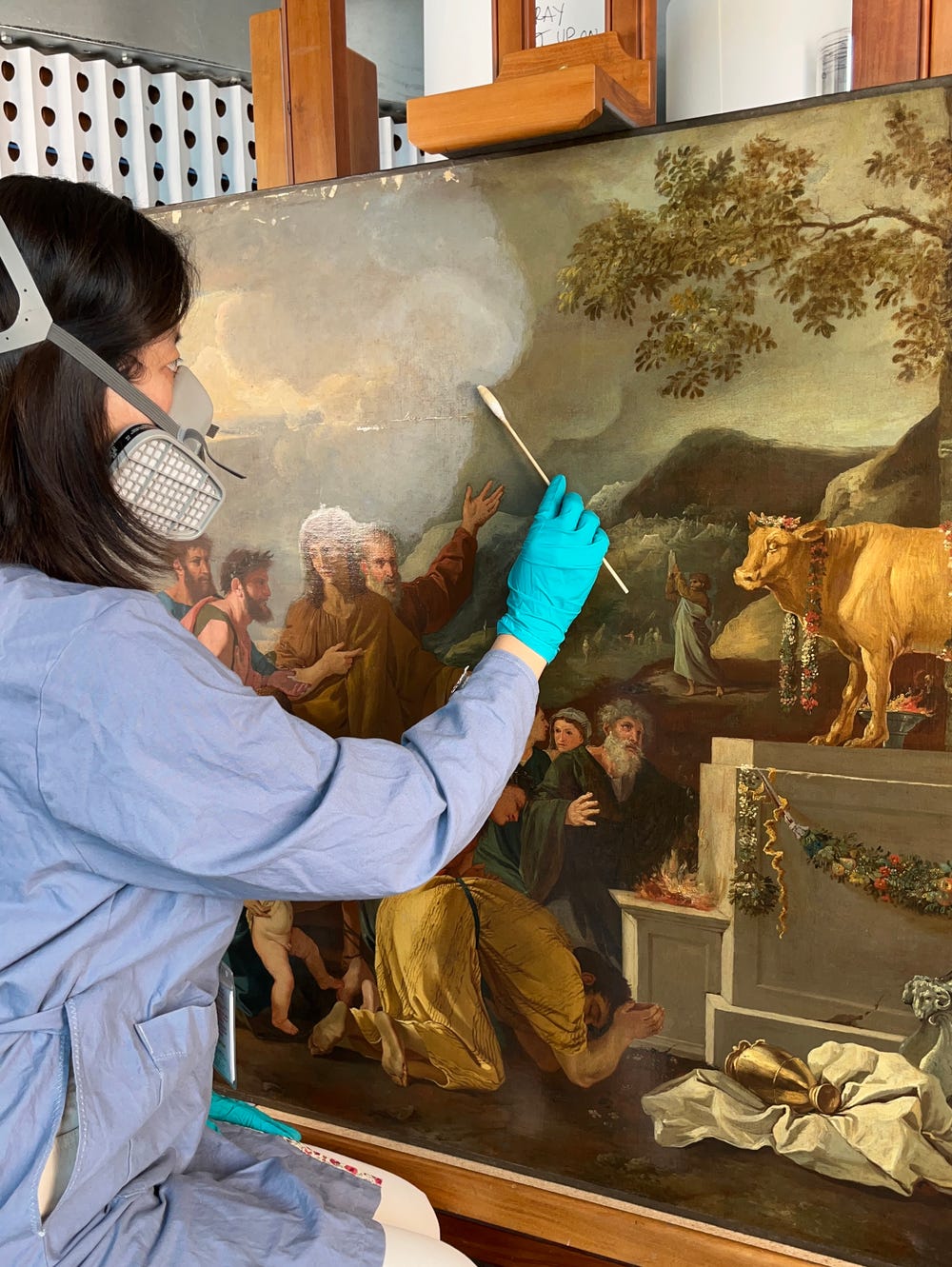The exhibition Truth and Beauty: The Pre-Raphaelites and the Old Masters at the Legion of Honor was created by a team that came together across the Fine Arts Museums of San Francisco. All four conservation departments at the de Young and Legion of Honor, including objects, paintings, works on paper, and textiles, were engaged in the preparations for this installation. Colleagues in the four departments helped shed new light on select works from the Museums’ permanent collections. In this series, our conservators share a behind-the-scenes look at the numerous preparations that took place before the exhibition opened to the public.
An “illuminating” look into book mounts
There are golden treasures on display in Truth and Beauty, but they’re not the sunken treasures of a pirate ship; they’re hand-illustrated books with exquisitely crafted bindings.
Two of these books date to the early twentieth century, though they hearken back to the tradition of illustrated manuscripts from the medieval period. Passionate about a return to craft, Pre-Raphaelites and artists like William Morris (British, 1834 – 1896) eschewed modern mechanized manufacturing in favor of the hand production of decorative objects.
Hand and Soul, written by Dante Gabriel Rossetti (British, 1828 – 1882), tells the tale of a fictional early Italian artist. This sumptuously decorated volume was made by Francis Sangorski (British, 1875–1912) and George Sutcliff (British, 1878 – 1943) over the period of 1904 – 1911. Rather than printed, the text was handwritten on vellum pages and illuminated with beautiful imagery and decorative borders in tempera paint and gold leaf. The volume was bound by hand as well, and its deep green leather covering features an elaborate display of three-dimensional jeweled pomegranates set amid hand-gilded foliage. The manuscript pays homage to its medieval-art predecessors and to the exacting craftsmanship of Morris’s Kelmscott Press, which published the original text in 1895.
Graduate conservation intern Madison Brockman installs Hand and Soul using rare earth magnets (left). These magnets are strong enough to hold the book open yet will not leave an impression on the vellum pages, and are covered with paper to match their surroundings. The cover of the book features jewels and gold leaf (right).
Jeweled “treasure bindings” like these are simply too beautiful to cover up, so the paper conservation team at the Legion of Honor needed to engineer a new way of safely displaying the book. Book cradles are commonly used to display books, yet they can obscure the covers and typically allow for the display of only one opening, or two pages.
Standing Hand and Soul upright, without a cradle, allows for a full view of the opulent covers and also two openings. The conservators devised an inconspicuous mounting system that includes custom-painted pins and magnets to secure the book upright and open. While each book is unique and poses its own challenges for exhibition, this one is in excellent condition and safe to display in this novel way.
Rare earth magnets of various sizes are wrapped in paper to match the area of the book in which they will be placed (left). A single book can have many different magnets, based on its aesthetic needs and the magnets’ holding power. Custom painted plastic covered pins inserted into the deck below the book help stand it upright and in place (right).
The conservators employed this minimally visible mounting system in the display of another book, The Selected Poems of William Morris. This volume was designed, handwritten, and illuminated in 1912 by Alberto Sangorski (British, 1862 – 1932) and published by Robert Rivière & Son Bookbinders & Booksellers in London. Also meant to imitate a medieval illuminated manuscript, this book features an extravagant cover of gold tooled and inlaid leathers.
Rare earth magnets are used to hold the pages open to two openings, one showing a beautiful accompanying image to the poem “In Defense of Guinevere.” The magnets are covered with paper to match the color of the area in which they would be placed. One magnet on the back cover is even disguised by covering it with paper printed with the photographically reproduced pattern below!
Madison Brockman adjusts the distance between the two openings displayed from The Selected Poems of William Morris. Highlighted on the back cover is one of the disguised rare earth magnets used to hold the book open. This magnet is covered with paper that has the cover’s design printed on it (detail).
The book is held upright with custom-painted pins that, when installed in the deck below, support the book in a comfortable upright position and prevent its closing. Pins are used in the same way to hold open the rolled silk interleaving “curtains” sewn into each opening, which would have otherwise obscured the illuminations and text.
Gallery view of Truth and Beauty at the Legion of Honor. The case in the foreground houses The Selected Poems of William Morris, whose minimally-visible upright mounting system allows for more visibility than a traditional book cradle, seen supporting the other two books in the image.
The beauty of every facet of these books inspired the paper conservators to create some truly creative mounting strategies. The minimally visible system of magnets and pins allows the books to be displayed in all their glory, while ensuring their safety for the duration of the exhibit.
Text by Madison Brockman, graduate conservation intern, Works on Paper
